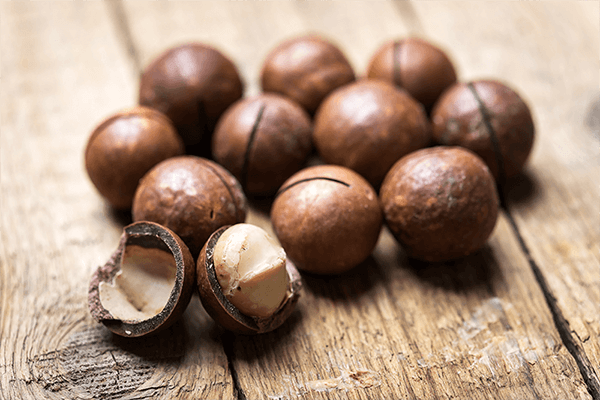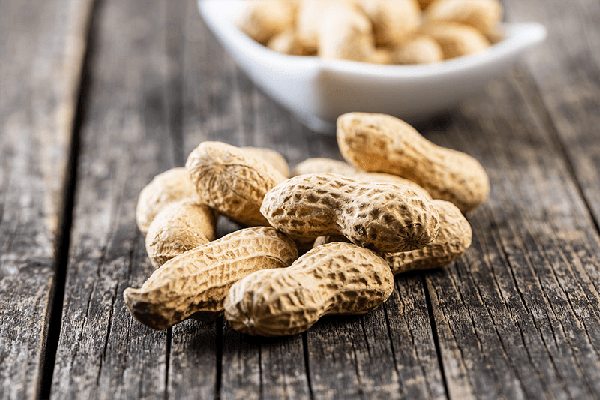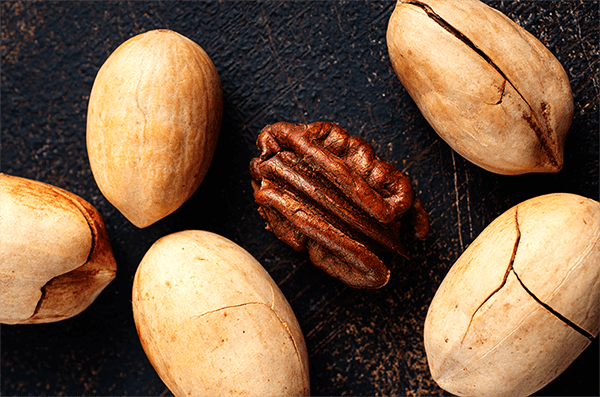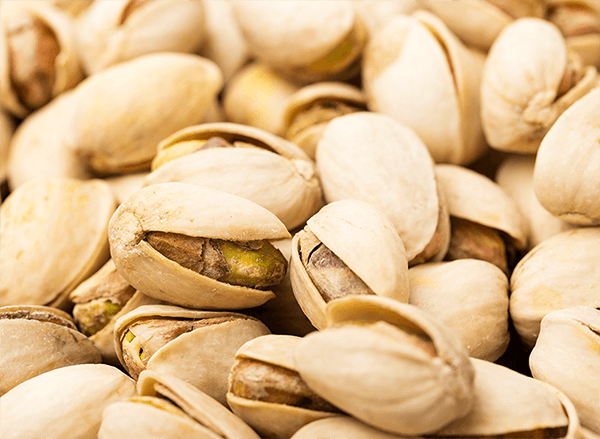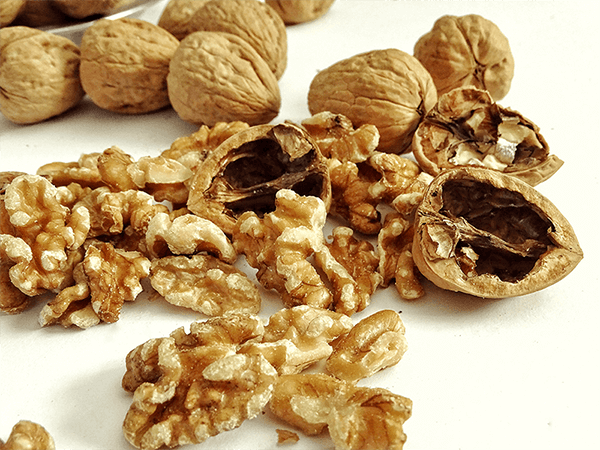Where Do Nuts Come From?
14th Aug 2020
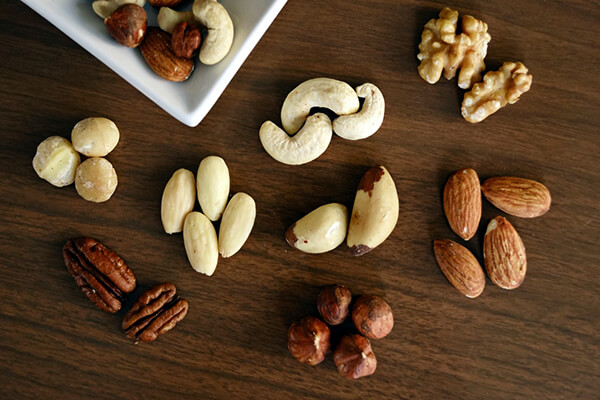
Nuts grow around the world. In similar climates with some countries producing a majority of a specific global crop. All nuts from each growing area are harvested one time a year. Because climates are different depending on the country, when a specific nut is harvested in each country varies. At anuts.com (and Argires Snacks), most of our nuts are grown in the United States. Only cashews and macadamias come from other countries.
Here is the rundown:
Almonds
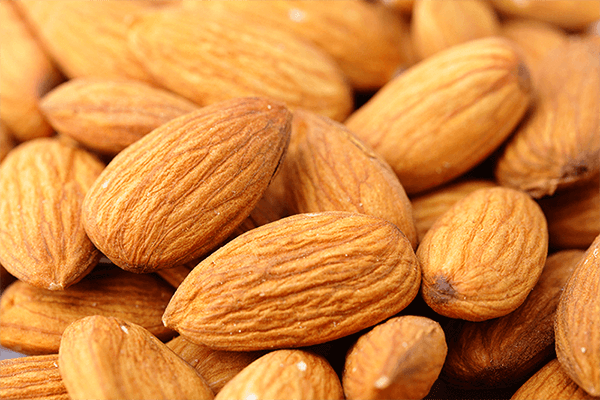
Where do Almonds come from?
Almonds are grown in a number of different regions with warmer, Mediterranean-like climates, such as Spain, Morocco, Iran and a few other southwest Asian countries, but most of the almonds we consume are grown primarily in California.
How are Almonds grown?
Like many nuts, almonds grow on smallish trees, about a foot wide in the trunk and up to about 12 feet. The trees often have soft white or pinkish flowers, too.
When are Almonds harvested?
Almonds are harvested in the late summer, early fall, typically August and September. They are harvested by first shaking them out of the trees to then be collected from the ground, either by hand or by a machine called a sweeper, that collects and then sifts out other debris to leave just the almonds.
Production statistics
About 80% of all Almonds consumed worldwide are grown in California.
Did you Know?
Almonds are not classed as nuts and are instead stone fruits. They’re considered nuts by cooks, but to farmers and growers, they’re known as fruits.
Brazil Nuts
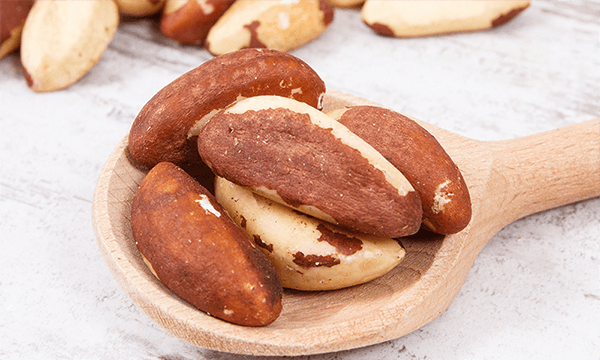
Where do Brazil Nuts come from?
Brazil nuts, obviously, come from Brazil, where they grow wild in the temperate climate of the Amazon Rainforest. Since the Amazon doesn’t know boundaries, they are also common in other South American countries, including Peru, Ecuador, Columbia, Venezuela, and Bolivia. There are some Brazil Nut growers here in the United States, as well.
How are Brazil Nuts grown?
Brazil nuts grow wild in the Amazon on trees, but these can take up to 20 years before they mature enough to begin producing the nuts. The trees produce large, heavy pods that have an outer shell, and inside are the Brazil nuts.
When are Brazil Nuts harvested?
Brazil Nuts are harvested generally from December to March, which is technically the fall season south of the equator.
Production statistics
A single Brazil Nut Tree can make 3,600 – 7,200 nuts per season.
Did You Know?
Brazil Nuts are actually considered seeds. They form in “pods” of a couple dozen or so, and only a native rodent and humans (with help from tools) can open the outer shell of the pod that houses the nuts.
Cashews
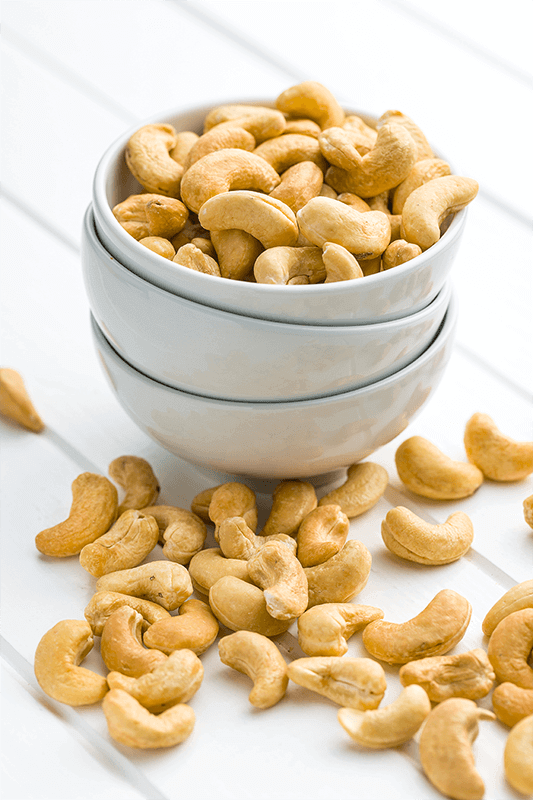
Where do Cashews come from?
Cashews are native to Brazil, but were brought back to India by the European Conquistadores in the 1500s, and are now also grown in Africa, Vietnam, and other south Asian countries.
How are Cashews grown?
Cashews are a fruit of the Cashew trees, which are large wide trees, often growing over 45ft. The cashew nut itself is actually a secondary fruit, growing on the end of what is the flower, or cashew apple, which is also edible.
When are Cashews harvested?
Cashews are harvested at the start of the tropical winter season, which is about two months after the fruit has set. They are harvested directly from the tree or picked up from the ground after they’ve fallen. Either way, it’s important to wear protective clothing because the oils from the shells can be very damaging.
Production statistics
It can take up to three years before a cashew tree starts producing nuts, but up to eight years it produces enough cashews to be sold. 3.96 metric tons of cashews were produced worldwide in 2019. (Source: https://www.statista.com/statistics/967702/global-cashew-nut-production/)
Did You Know?
You rarely see cashews in their shells because the oils on them are known to cause severe irritation, similar to contact dermatitis and poison ivy. It’s an interesting tidbit because while nut allergies are still rare, but the shells are considered so allergenic, even poisonous, that they are removed before being packaged for sale. (These oils from the shells are used in other production environments, too.)
Filberts (aka, Hazelnuts)
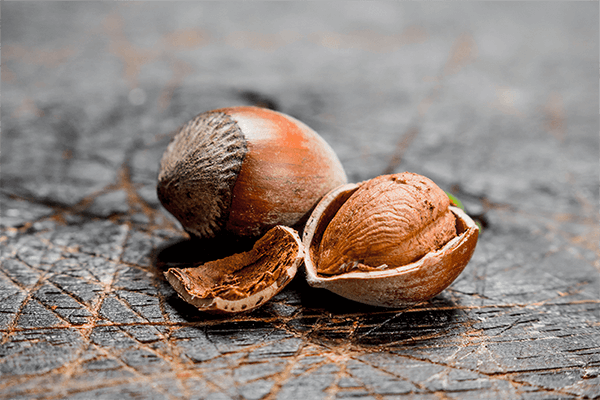
Where do Hazelnuts come from?
Hazelnuts, or more specifically Filberts, are mainly grown in Mediterranean climates, although warmer climates in other countries also produce them, including the United States and China.
How are Hazelnuts grown?
Hazelnuts, or Filberts, are grown on thick bushes, trees that reach about 20 feet tall that do best (for producing nuts) in nutrient-deficient soils. Soil with higher nutrients allows the trees to flourish and produce large, lovely flowers and leaves, but limits the production of the nuts themselves. The trees begin to produce as early as four years after planting and continue to increase the yield until maturity, at about seven years.
When are Hazelnuts harvested?
Hazelnuts are harvested in mid to late fall. Later in the fall the trees drop both their leaves and nuts. While some use equipment or manually shake the trees to release the nuts, most harvesters wait for the trees to drop their own before collecting them.
Production statistics
Turkey and Italy produce 80% of the global crop of filberts. 25% of the global hazelnut supply is used in Nutella and Ferrero Rocher products.
Did You Know?
Hazelnuts have been grown and used for their nutritional and health benefits for centuries, all over the world. A discovery in Scotland found evidence of tended filbert crops dating back 5000-6000 years.
For more information about Filberts and Hazelnuts, go to https://en.wikipedia.org/wiki/Hazelnut
Macadamia Nuts
Where do Macadamia Nuts come from?
While originally discovered and produced in Australia, the macadamia nut is now produced by many countries around the globe, South Africa is now the main commercial producer, producing about a quarter of the entire global consumption. Other major producers include Brazil, the United States, CostaCosta Rica, New Zealand, Colombia, Israel, and Guatemala.
How are Macadamia Nuts grown?
Macadamia nuts are grown on trees that take seven to 10 years to produce the nuts. They then have to be harvested by hand, which is why macadamia nuts are so expensive. The trees are also not consistent in their growth, so some may produce a lower quality nut.
When are Macadamia Nuts harvested?
Macadamia nuts are harvested continuously, and due to varying ripening stages, are best collected after they’ve fallen from the trees. The ongoing harvesting requires continuous attention and gathering, making the use of seasonal harvesters impractical.
Production statistics
The global macadamia nuts market size was estimated at USD 1.17 billion in 2019 and is expected to reach USD 1.32 billion in 2020. A single fully mature tree (15 years) can produce up to 35 kg a year.
Did You Know?
Macadamia nuts are poisonous to dogs. They are also considered the most expensive nut, costing upwards of $25 a pound.
Peanuts
Where do peanuts come from?
At this point, there are fewer places where peanuts DON’T come from than where they do, but the two largest producers globally are China and India, which together represent more than half of the world supply. The United States is a top producer as well, beginning in the colonial times as the crops, knowledge, and producers were brought from South American native cultures and fine tuned here.
How are peanuts grown?
Peanuts are not tree nuts, they are grown in the ground, like potatoes or carrots.
When are peanuts harvested?
Timing the harvest of peanuts can be tricky because the timing of ripening can vary, and if done all together, you risk having unripe or overripe pods that break off and stay in the ground. They are typically harvested in what we know as middle fall conditions, from September to November.
Production statistics
The US grows 10% of the world’s peanuts.
Peanuts are by far the most popular consumed tree nuts in the world, by over 45x the next favorite, almonds.
Did You Know?
Peanuts were generally grown in the US as a regular garden crop and used mainly for animal food. It wasn’t until after the US Civil War, and particularly after an initiative began by the Department of Agriculture in the late 19th Century, that human consumption and crop growing became popular.
We also have an interesting article for you: How Peanuts Fed the Confederacy.
Pecans
Where do Pecans come from?
Pecans are native to the south eastern portions of North and Central America, encompassing two of the largest producers, the US and Mexico. They are also grown in Peru, Brazil, Israel, South Africa, and Australia.
How are Pecans grown?
Pecans are a tree nut, which means they grow on trees, big ones. The pecan tree, which is a variety of the hickory tree, can grow to over 130 feet, with a thick truck that can be over 6 feet in diameter.
When are Pecans harvested?
Pecans are typically harvested between October and November, as the fallen nuts are collected from the ground by the trees. It can take a pecan tree 12 years to produce nuts, and then can only produce nuts every two years.
Production statistics
The United States accounts for over 40% of the global Pecan crops, with most of the US production centering around Georgia, Mississippi, Texas, New Mexico, Arkansas, and Arizona. 75% of US pecan production is grown in Georgia, Texas and New Mexico. Pecans in the US yielded about 670 pounds per acre in 2019, with a value of over $465M. Combined with the production in Mexico, North America produces over 90% of the world’s pecans.
Did You Know?
Like some of the other tree nuts, the pecans are technically a fruit, but in cooking and food are considered a nut. Pecans can be toxic to dogs, and if moldy, should be discarded immediately due to the toxicity to humans.
Pistachios
Where do Pistachios come from?
While pistachios are grown all over the world they are native to central Asia. Iran is the largest producer of Pistachios, while the US is the second highest. Together they account for over 70% of the global crop. 98.5% of US pistachios are grown in California. Turkey, China, and Syria are also global producers.
How are Pistachios grown?
Pistachios grow on trees in long, dry, hot climates. They do best with little humidity and can withstand cool temperatures, which they actually need to rejuvenate after the harvest, but require hot temperatures to thrive.
When are Pistachios harvested?
Pistachios ripen and begin to fall from the trees in late August through September. Harvesting is done by shaking the trees (manually or mechanically) to loosen and drop the ripe nuts from the tree. For this reason, crops are typically planted in orchards that allow for machinery to access, shake, and capture the nuts in pre-set structures, like boxes or cloth nets, to keep the nuts from falling to the ground, for easy recovery.
Production statistics
In 2019/2020 US was responsible for 51% of the global pistachio production (Source: Statista).
Iran is the largest producer of Pistachios, while the US is the second highest. Together they account for over 70% of the global crop. 98.5% of US pistachios are grown in California.
Did You Know?
There are two types of pistachio trees, male and female. The female tree is the one that produces the nuts, but they cannot if there is no male tree nearby for pollination.
Walnuts
Where do Walnuts come from?
While walnuts are produced in many countries around the world, China and the US lead the production, Iran, Turkey, Ukraine, Mexico, and Chile are also significant contributors to the remaining 25% of the world’s walnut needs.
How are Walnuts grown?
Walnuts, themselves seeds, can be grown easily, but they do take about 7 years to grow into trees that produce walnuts. The trees grow to about 30 feet and are full with leaves making them great trees for shade and orchards.
When are Walnuts harvested?
Walnuts are harvested in early to mid fall, from September to November, shaken or dropped from the tree and then picked from where they fall. It’s critical to collect the walnuts that fall as quickly as possible as they are prone to mold and beating feasted on by insects.
Production statistics
China produces over 50%, and the US over 30% of the global walnut crops.
Did You Know?
Walnuts can get sunburn. If they are overheated they can burn from the light and heat, causing them to darken and shrivel up. This is especially likely if they are dry. Read more about Walnuts and sunburn here.
Walnuts are the oldest food tree known to man, dating back to 7000BC,
Most parts of the walnut tree, not just the nuts, are usable, from the leaves to the wood, making them great investments in planting for economic and personal use, for the beauty, shade, and of course, nuts.
Summary
We believe that fast & fresh enhances taste. So we work our hardest with all of our suppliers to make sure the freshest, healthiest and highest quality batches are picked for you to enjoy, your way. That's why Anuts.com is the best place to buy nuts online.


